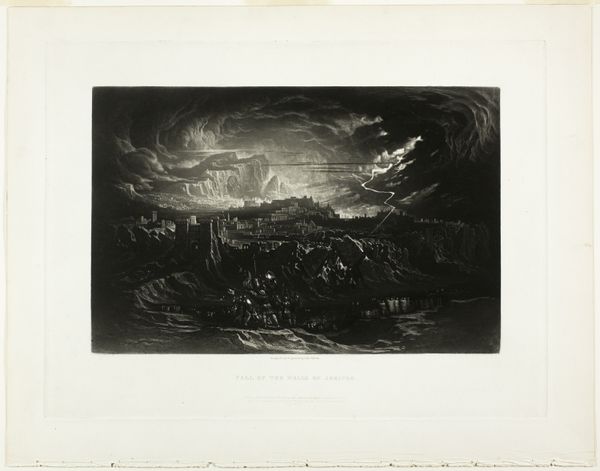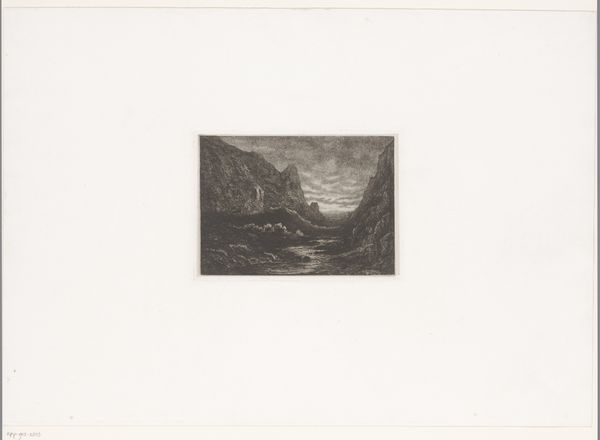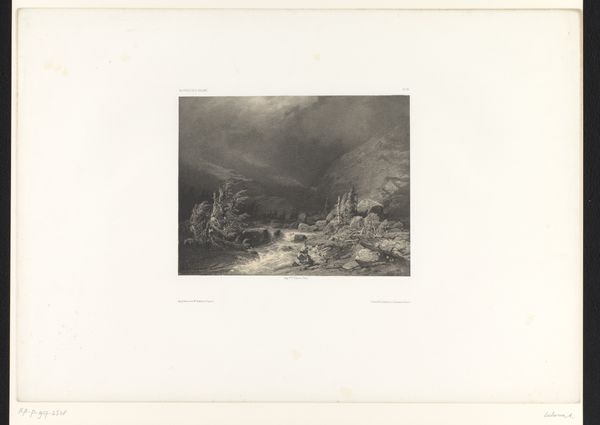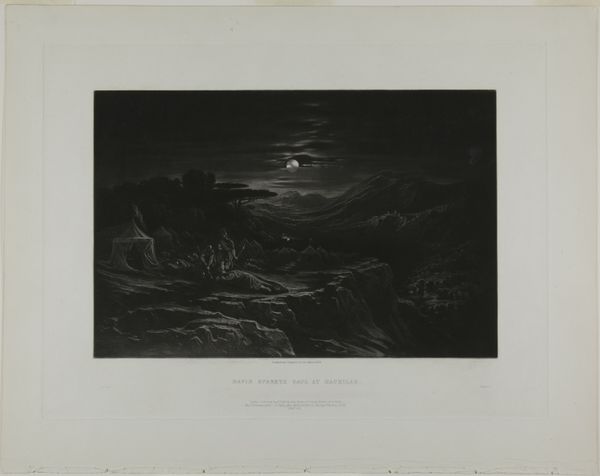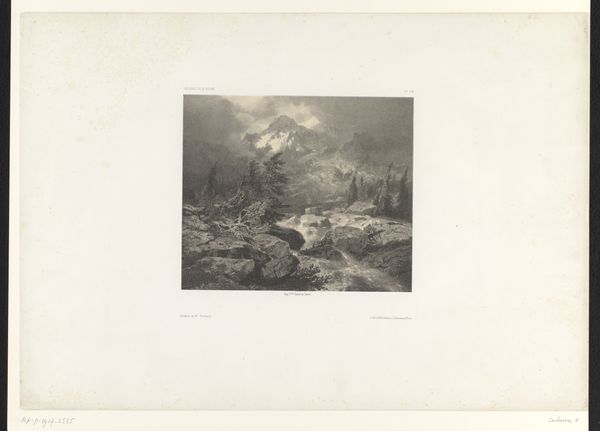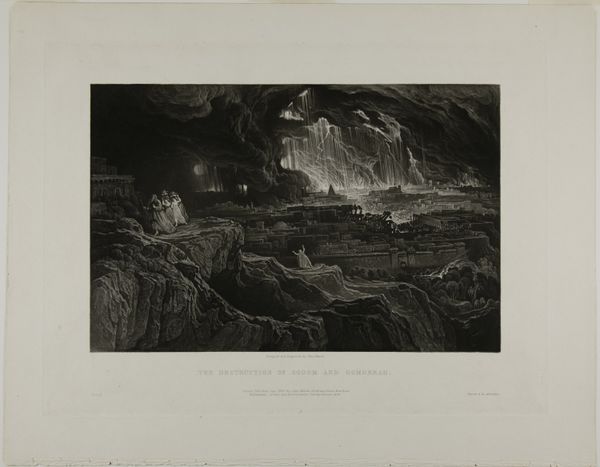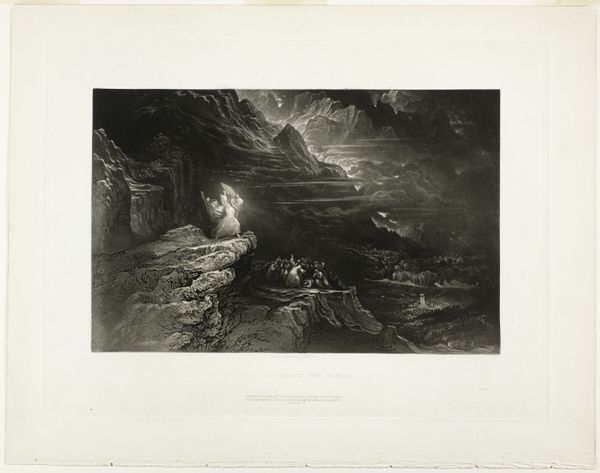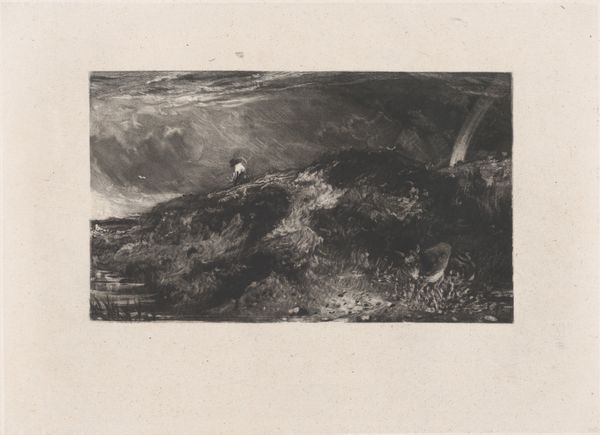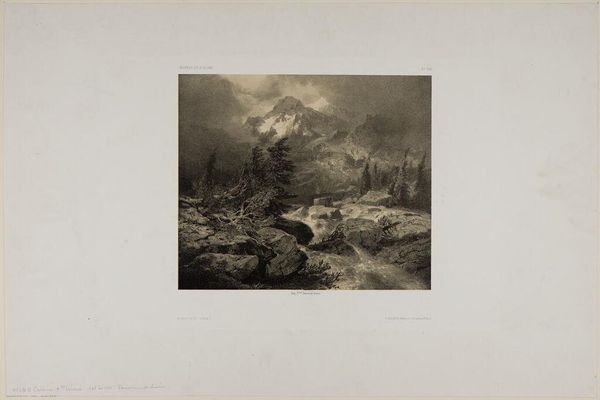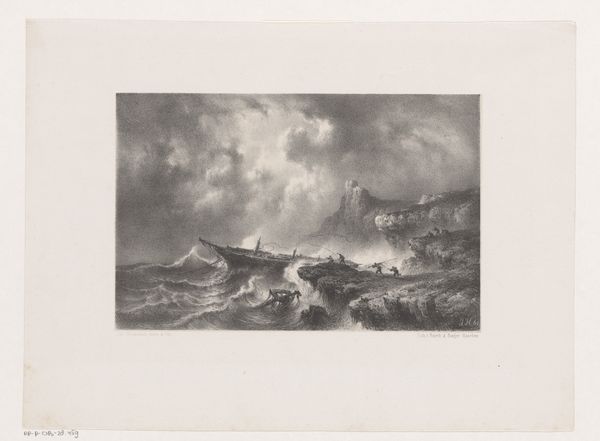
Joshua Commanding the Sun to Stand Still, from Illustrations of the Bible 1835
0:00
0:00
drawing, print, etching, paper
#
drawing
#
allegory
# print
#
etching
#
landscape
#
paper
#
romanticism
#
history-painting
Dimensions: 190 × 290 mm (image); 268 × 357 mm (plate); 329 × 416 mm (sheet)
Copyright: Public Domain
Curator: What a dramatic scene! Before us is "Joshua Commanding the Sun to Stand Still, from Illustrations of the Bible," a print etched by John Martin in 1835. It's currently part of the Art Institute of Chicago's collection. Editor: Whoa. It feels… apocalyptic. Everything’s swirling, chaotic, yet there's a kind of desperate energy in the figures below. You can almost feel the wind in your face just looking at this. Curator: Martin was fascinated by biblical events and their potential for grand symbolic representation. The halted sun here is a profound symbol of divine intervention, representing not just temporal power, but the very control of cosmic order to achieve victory. Editor: Right, that checks out. To me, it's the lighting that really grabs you. That central beam, illuminating the city...it’s as though it's singling out the righteous, in that old-school Romanticism kind of way. But also casting everything else into shadow. Are we supposed to cheer for Joshua, or question this kind of force? Curator: The Romantics certainly loved that interplay of light and dark, or "chiaroscuro" as the Italians would say, but on top of it, we might recognize something of the Sublime at play—an experience of awe mixed with terror, facing something beyond human comprehension or control. Editor: Exactly! That feeling of being dwarfed by something immense and, honestly, a bit scary, is so effective. And you have these tiny, tiny people huddled below as if in the path of an onrushing storm – a perfect reminder of the insignificance of mortals against a divine order, or some force of nature, depending on your view. Curator: The city in the background might represent the permanence that these mortals seek, contrasting it against the perceived ephemeral quality of human existence that these figures below are expressing in the form of anxiety. Editor: So good. I keep going back to those figures in the foreground... that urgency in their faces. The gesture upwards that pleads with what seems like a cloud deity of pure angry energy. Like, "Hey, uh, maybe ease up on the theatrics, alright?" I almost wish I could join their prayer! Curator: Looking closely at how Martin composed this scene certainly provides ample scope for considering how visual language transmits narratives, not merely illustrating but reinterpreting them. It shows us that visual symbols possess long duration. Editor: This image makes the hair on my neck stand up. Gives me lots to reflect upon, really appreciate you talking me through it.
Comments
No comments
Be the first to comment and join the conversation on the ultimate creative platform.

